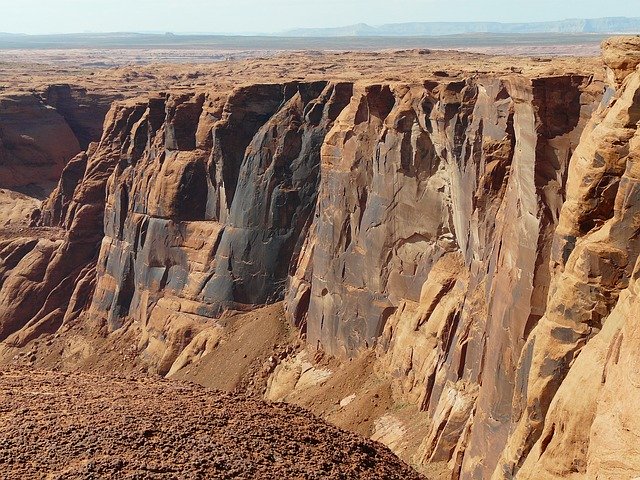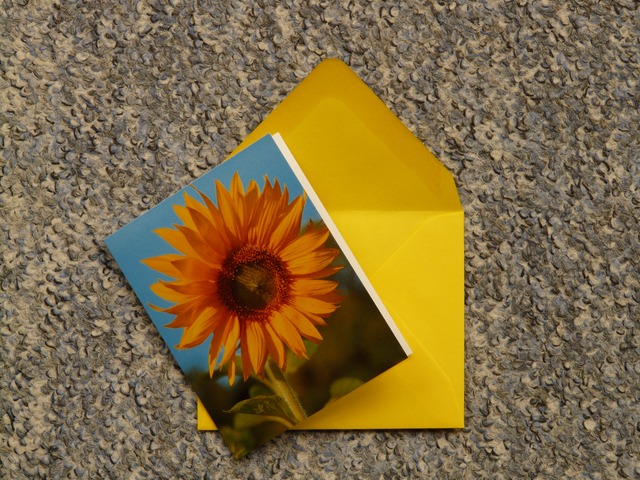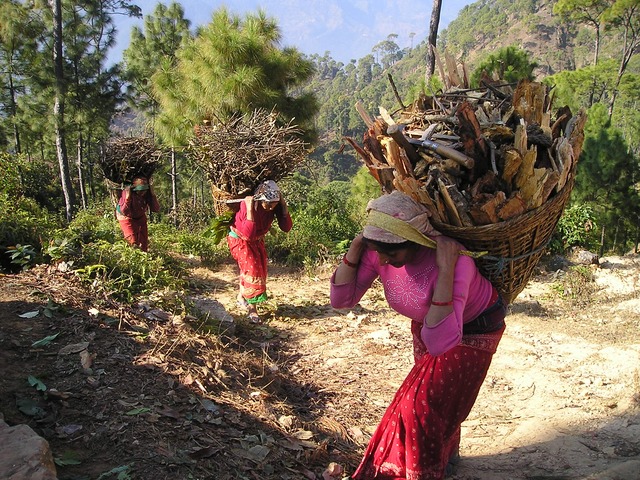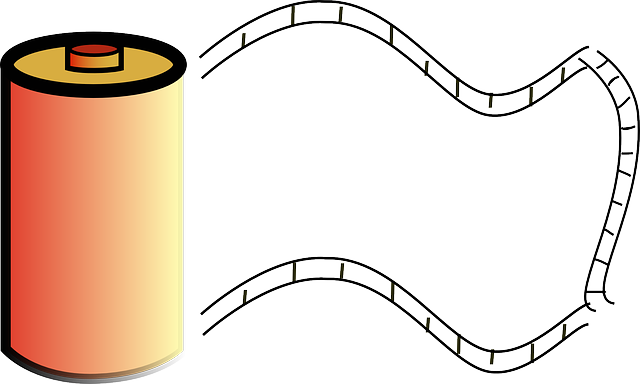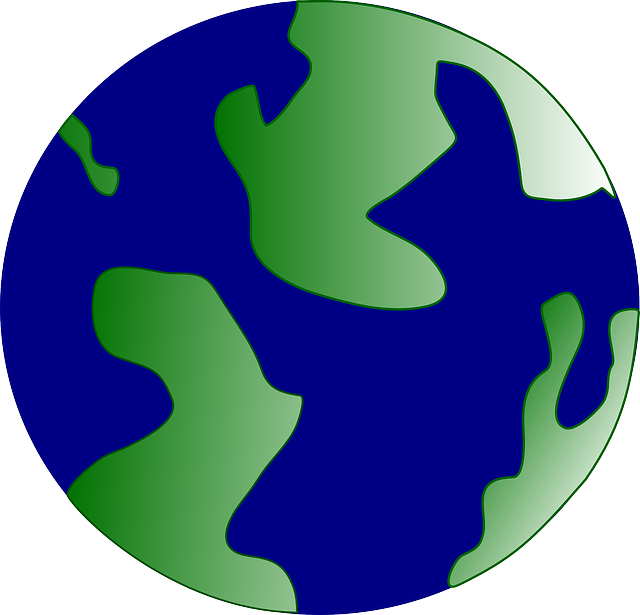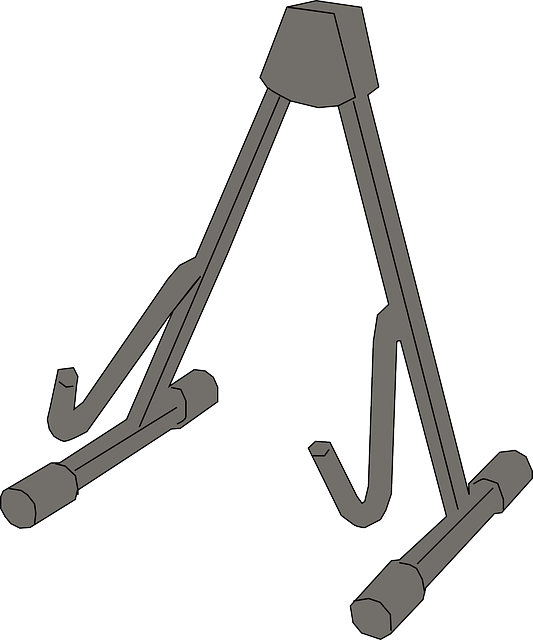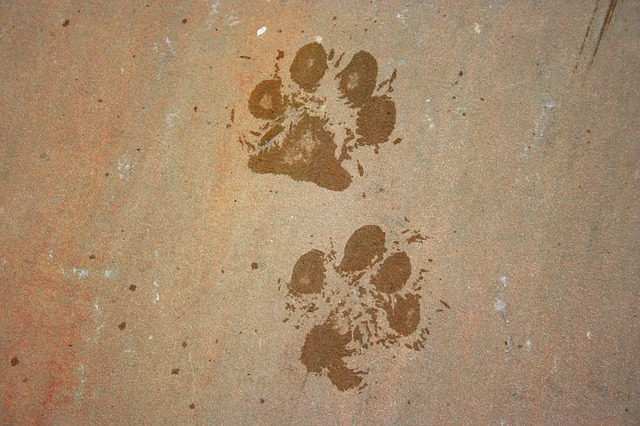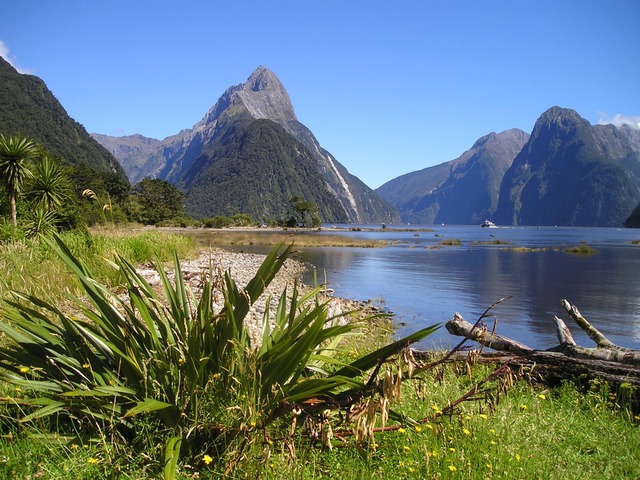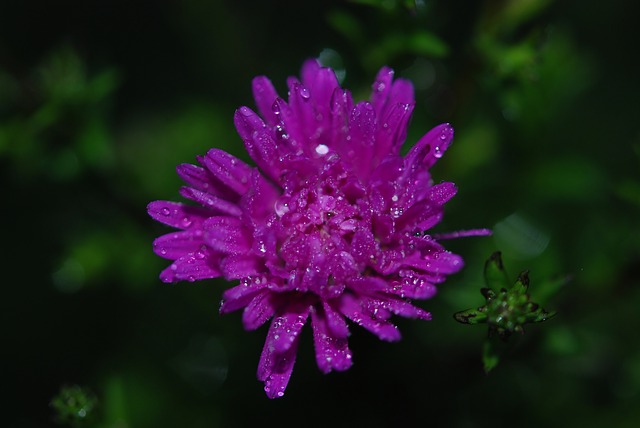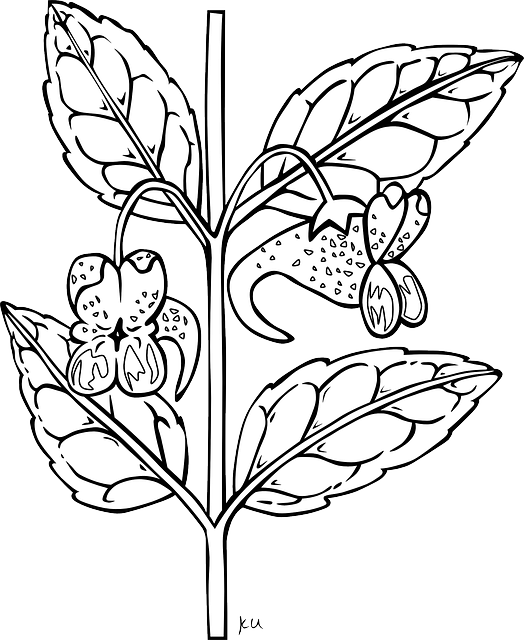إمداد المياه والصرف الصحي في دولة فلسطين
| دولة فلسطين: المياه والصرف الصحي | ||
|---|---|---|
| البيانات | ||
| الوصول للمياه | 91% | |
| الوصول لخدمات الصرف الصحي | 89% | |
| استمرارية الإمداد | 62.8% (2005) | |
| متوسط الاستخدام المحلي (2005/2009) (liter/capita/day) | الضفة الغربية: 50 قطاع غزة: 70 |
|
| متوسط تعريفة المياه في الحضر (دولار/م3) | 1.20 | |
| حصة القياس المنزلية | n/a | |
| الحصة من مياه الصرف المعالجة | الضفة الغربية: 15% قطاع غزة: 62% (2001). |
|
| المياه الغير هادفة للربح | 44% | |
| الاستثمار السنوي في إمداد المياه والصرف | n/a | |
| مصدر تمويل الاستثمار | بصفة أساسية من منح خارجية | |
| المؤسسات | ||
| لامركزية البلديات | لا | |
| الشركة الوطنية للمياه والصرف الصحي | لا | |
| منظم المياه والصرف الصحي | سلطة المياه الفلسطينية | |
| المسئولية عن وضع السياسات | مجلس الوزراء/المجلس الوطني للمياه | |
| قانون القطاع | نعم (2001) | |
| عدد موفري الخدمة للحضر | n/a | |
| عدد موفري الخدمة للريف | n/a | |
الموارد المائية في فلسطين بالكامل تحت سيطرة إسرائيل وتقسيم المياه الجوفية خاضع للبنود الواردة في اتفاقيات اوسلو2.[محل شك]
بصفة عامة، تعتبر جودة المياه في قطاع غزة سيئة بشكل كبير عند مقارنتها بالضفة الغربية. حوالي ثلثي نصف المياه الواردة للأراضي الفلسطينية تُفقد في شبكة التوزيع. تسبب الحصار المستمر على قطاع غزة بالإضافة لحرب غزة إلى إلحاق أضرار بالغة بالبنية التحتية في قطاع غزة. فيما يتعلق بمياه الصرف الصحي، فإن محطات المعالجة الحالية لا تملك القدرة على معالجة جميع مياه الصرف المنتجة، مما يسبب تلوثاً شديداً للمياه. يعتمد تطوير القطاع بدرجة كبيرة على التمويل الخارجي.
نظرة عامة
تعتبر منطقة إسرائيل/فلسطين منطقة "مضغوطة مائياً"، مثلها مثل الكثير من البلدان الأخرى في المنطقة، ويفكر المحللون الأكاديميون في فهم كيفية مشاركة الموارد المائية، "المشكلة الأكثر أهمية"، بين شعوب منطقة الشرق الأوسط. ثلث مجموع المياه المستهلكة في إسرائيل كانت في التسعينات مستمدة من المياه الجوفية التي اتىت بدورها من الأمطار في الضفة الغربية، وقد وصف الصراع على هذا المورد بأنه لعبة محصلتها صفر. وفقاً لهيومن رايتس ووتش، فإن مصادرة إسرائيل للمياه تنتهك لوائح لاهاي لعام 1907، التي تحظر على السلطة القائمة بالاحتلال مصادرة موارد الأراضي المحتلة لمصلحتها الخاصة. في أعقاب عام 1967، ألغت إسرائيل حقوق المياه الفلسطينية في الضفة الغربية، ومع الأمر العسكري رقم 92 الصادر في أغسطس من ذلك العام، أُسندت جميع السلطات على ادارة المياه للسلطة العسكرية، رغم أنه بموجب القانون الدولي، يحق للفلسطينيين الحصول على حصة. الأحواض الجوفية الإسرائيلية منشأها في أراضي الضفة الغربية والتي بدونها تتعرض المدن الشمالية للجفاف. وفقاً لجون كولي، فإن آبار المزارعين الفلسطينيين في الضفة الغربية، والتي كانت طبقاً للقانون العثماني والبريطاني والأردني والمصري مورداً خاصاً مملوكاً للقرى، كان عنصراً رئيسياً وراء استراتيجية إسرائيل بعد عام 1967 للحفاظ على المنطقة ولحماية "إمدادات المياه اليهودية" من ما اعتبر "تعدياً" تم حظر استخدام أوإغلاق الكثير من الآبار الموجودة، ومُنع الفلسطينيون من حفر آبار جديدة دون الحصول على تصريح عسكري، وكان من المحال الحصول عليه، وفُرضت حصص محددة للفلسطينيين لاستخدام المياه. في 2010 كان هناك 527 ينبوع تزود الفلسطينين بالضفة الغربية بنصف استهلاكمهم المحلي. غالباً ما تم مصادرة الآبار التاريخية التي كانت محفورة في القرى الفلسطينية من أجل استخدامها حصرياً للمستوطنات: إلى غير ذلك استولت معاليه أدوميم على خدمة الآبار الرئيسية في الثمانينيات، بينما تم تجريد طرد أهالي القرى من معظم أراضيهم، تاركين 2979 من أصل 11179 دونم.
معظم عمليات الحفر التي تجريها شركة المياه الإسرائيلية مكوروت في الضفة الغربية تتم في وادي الأردن، حيث انتهى الفلسطينيون بحلول عام 2008 بسحب 44% من المياه، أي أقل مما كانوا يحصلون عليه قبل الاتفاقية المؤقتة لعام 1995. بموجب اتفاقيات أوسلو، حصلت إسرائيل على 80% من مياه الضفة الغربية، و20% المتبقية للفلسطينيين، وهي نسبة لم تمنح الفلسطينيين أي "حق ملكية". من بين ما تم الاتفاق عليه بشأن تخصيص 138.5 مليون متر مكعب لعام 2011 ، تمكن الفلسطينيون من استخراج 87 مليون متر مكعب فقط، بالنظر إلى الصعوبات في الحصول على تصاريح إسرائيلية، ووجوب تعويض النقص الناجم عن تجفيف نصف الآبار الفلسطينية جزئياً عن طريق شراء المياه من إسرائيل، مع انخفاض تأثير استخدام المياه على الفرد الفلسطيني بنسبة 20%. الحد الأقصى لاستهلاك الفرد من المياه حسب منظمة الصحة العالمية هو100 لتر يومياً وبسبب القيود المفروضة على حصولهم على المياه، قابل تطوير البلدات الفلسطينية النموذجية الجديدة، مثل روابي، صعوبات شديدة.
التاريخ
منذ حرب 1948، كانت مسألة تنمية الموارد المائية في المنطقة، قضية حرجة في الصراع الإقليمي ومفاوضات السلام، التي ضمت في البداية سوريا والأردن وإسرائيل. بعد حرب 1967، احتلت إسرائيل الأراضي الفلسطينية، وأصبح استخدام المياه والصرف الصحي مرتبط ارتباطاً وثيقاً بالتطورات في [[الصراع الإسرائيلي الفلسطينيي]. تعتبر موارد المياه والأراضي في الضفة الغربية على وجه الخصوص بمثابة العقبة الرئيسية أمام حل النزاع في المنطقة. يدعي الفلسطينيون حتى لهم الحق القانوني في الملكية، أويطالبون استخدام ثلاثة مصادر للمياه في المنطقة: (أ) الجوض الجبلي، الحوض الجوفي الساحلي بقطاع غزة ونهر الأردن، بكميات مياه تصل إلى 700 م³/سنوياً، أكثر من 50% من موارد المياه الطبيعية بين البحر المتوسط ونهر الأردن.
عام 1995، تأسست سلطة المياه الفلسطينية بموجب مرسوم. في السنة التالية، تم تحديد مهامها، أهدافها ومسئولياتها بموجب قانون، مُنحت بموجبه سلطة المياه الفلسطينية الحق في إدارة الموارد المائية وتطبيق سياسة المياه.
الموارد المائية
التقسيمات تبعاً لاتفاقيات اوسلو2
بموبج اتفاقيات اوسلو2 لعام 1995، يُسمح للفلسطينيين في الضفة الغربية باستخدام أكثر من 118 مليون متر مكعب من المياه سنوياً. من المفترض حتى تأتي 80 مليون متر مكعب من حفر آبار جديدة. إلا حتى سلطة المياه الفلسطينية تمكنت فقط من حفر آبار تمدها بـ30 مليون متر مكعب فقط على حساب الينابيع والآبار الموجودة. في اتفاق أوسلوالثاني، حصل الإسرائيليون على أربعة أضعف حصة الفلسطيين، أو80% من موارد الحوض الجوفي المشهجر. إلا حتى 94% من الحوض الجوفي الغربي (340 مليون م³) تم تخصيصه للإسرائيلي من أجل استخدامه داخل إسرائيل. الكميات المسموح بها لم يتم تكييفها بعد نهاية فترة السنوات الخمس المفترضة. أنشأ الطرفان لجنة المياه المشهجرة لتطبيق أحكام المادة 40 المتعلقة بالملحق الثالث.
وفقاً لتقرير صادر عن البنك الدولي، استخرجت إسرائيل 80% من المياه في الضفة الغربية أكثر مما تم الاتفاق عليه في اتفاق أوسلو، بينما كانت abstractions الفلسطينية ضمن النطاق المتفق عليه. على عكس التسقطات في أوسلو2، فإن المياه التي استخرجها الفلسطينيون عملاً في الضفة الغربية قد تقلصت بين عامي 1999 و2007. وبسبب الاستخراج المفرط من جانب إسرائيل، فإن مستويات الأحواض الجوفية تقترب من "النقطة" التي تحدث فيها أضرار لا رجعة فيها في طبقة المياه الجوفية. الآبار الإسرائيلية في الضفة الغربية تسببت في جفاف الآبار والينابيع الفلسطينية المحلية.
المياه الواردة من حوض نهر الأردن
يتدفق نهر الأردن الأعلى جنوباً إلى بحيرة طبرية، الذي يوفر أكبر سعة تخزين للمياه العذبة على امتداد نهر الأردن. تصب بحيرة طبرية في نهر الأردن السفلي، الذي يمتد جنوباً عبر وادي الأردن إلى نهايته في البحر الميت. الفلسطينيون محرومون من الحصول على هذه المياه. حوالي ربع الـ420 مليون متر مكعب التي تضخها إسرائيل من بحيرة طبرية تمضى إلى التجمعات المحلية في إسرائيل والأردن. يتم تحويل الباقي إلى إسرائيل من خلال شركة المياه الوطنية قبل حتى تصل إلى الضفة الغربية. يتم تحويل جميع المياه تقريباً من نهر اليرموك، شمال الضفة الغربية من قبل إسرائيل وسوريا والأردن. تقوم إسرائيل بتحويل مياه قناة تيرزا، وهوأكبر مجرى مائي في وسط وادي الأردن، تغذيه مياه الأمطار، إلى خزان تيرزا وتستخدمها المستوطنات في المنطقة لري المحاصيل وتربية الأسماك.
مياه سطحية أخرى
في غزة، يوجد مصدر واحد فقط للمياه السطحية وهووادي غزة. هناك مزاعم بأن إسرائيل تحول جزء من مياه الوادي لاستخدامها في الزراعة في إسرائيل قبل وصولها غزة.
المياه الجوفية
في الضفة الغربية، المصدر الرئيسي للمياه الجوفية هوالحوض الجوفي الجبلي، والذي يتألف من ثلاثة أحواض جوفية:
- الحوض الغربي، ويسمى في إسرائيل "حوض ياركون-تانينيم الجوفي"، وهوأكبر الأحواض الجوفية في إسرائيل، ويوفر سنوياً 36 مليون متر مكعب من المياه، تبعاً للمتوسط السنوي، (40 م³ مكعب منها مياه مسوسية). تقع 80% من منطقة "إعادة التعبئة" في هذا الحوض داخل الضفة الغربية، في حين حتى 80% من مساحة "التخزين" تقع داخل الحدود الإسرائيلية. يستغل الإسرائيليون طبقات المياه الجوفية لهذا الحوض عن طريق 300 بئر للمياه الجوفية العميقة إلى الغرب من الخط الأخضر، وكذلك عن طريق الآبار العميقة داخل حدود الضفة الغربية. يستخدمه الفلسطينيون عبر الآبار والينابيع.
- الحوض الشمالي الشرقي، في إسرائيل، ويسمى "حوض گيلبوع-بـيت شعان" أوحوض شخيخم-گيلبوع"،[5] ويصل معدل توفيره السنوي إلى 145 متر مكعب (70 م³ منها مياه مسوسية). تأتي 100% من المياه نتيجة هطول الأمطار على منطقة الضفة الغربية، لكنها تتدفق بعد ذلك إلى الطبقات الجوفية في الاتجاه الشمالي نحوالحوض (بيت شعان) ومرج ابن عامر.
- الحوض الشرقي، الذي يصب مياهه كاملة في نهر الأردن السفلي، ويقع بالكامل داخل الضفة الغربية، يبلغ متوسط تخزينه السنوي 172 مليون متر مكعب (70-80 م³ منها مياه مسوسية). يجف الحوض الشرقي بصفة أساسية من خلال الينابيع.
تبعأً لحنيكر، فإن متوسط معدل الاستدامة، كمية المياه العذبة المتشاركة المتجددة المتاحة عبر عموم وادي الأردن تقارب 2700 مليون م³ سنوياً، الذي يتألف من 140 مليون متر مكعب من المياه الجوفية و1300 مليون متر مكعب من مياه السطحية. ومع ذلك، لا يمكن سوى لجزء صغير من الفلسطينيين في الضفة الغربية استخدامه. منعت إسرائيل الفلسطينيين من الوصول إلى تام نهر الأردن الأدنى منذ عام 1967. بعد بدء الاحتلال العسكري الإسرائيلي عام 1967، أعربت إسرائيل حتى أراضي الضفة الغربية المتاخمة لنهر الأردن منطقة عسكرية مغلقة، ولم يُسمح سوى لمزارعي المستوطنين الإسرائيليين بالوصول إليها.
عام 1982، تم تسليم البنية التحتية للمياه في الضفة الغربية التي يسيطر عليها الجيش الإسرائيلي لشركة المياه الوطنية الإسرائيلية مكوروت. اعتباراً من عام 2009، تدير شركة مكوروت حوالي 42 بئراً في الضفة الغربية، معظمها في منطقة وادي الأردن، والتي تزود المستوطنات الإسرائيلية بمعظمها. تخضع كمية المياه التي يمكن لمكوروت بيعها للفلسطينيين لموافقة السلطات الإسرائيلية.
يُحظر على الفلسطينيين حفر الآبار في الحوض الجوفي الجبلي. تتدفق معظم مياه الحوض تحت الأرض باتجاه سفوح التلال وإلى الأراضي الإسرائيلية. وفقاً لتقديرات مختلفة، يتم استخدام ما بين 80 و85% من المياه الجوفية في الضفة الغربية إما من قبل المستوطنين الإسرائيليين أوتتدفق إلى إسرائيل.
الحوض الجوفي الساحلي هوالمصدر الوحيد للمياه في قطاع غزة. يمتد أسفل ساحل إسرائيل، ويصل نهاية الحوض إلى قطاع غزة. ومع تدفق المياه تحت الأرض بشكل أساسي من الشرق إلى الغرب، فإن عمليات الاستخراج الفلسطينية لمياه هذا الحوض ليس لها أي تأثير على الجانب الإسرائيلي. على النقيض من ذلك، قامت إسرائيل بإنشاء طوق من الآبار العميقة الكثيرة على امتداد حدود غزة وبهذه الكيفية تستخرج الكثير من المياه الجوفية قبل حتى تصل إلى غزة. تبيع إسرائيل كميات محدودة من المياه للفلسطينيين في غزة. بينما تنقل إسرائيل المياه من شمال أراضيها إلى الجنوب، لا يُسمح للفلسطينيين بنقل المياه من الضفة الغربية إلى غزة. هذا هوالسبب في استغلال هذا الحوض الجوفي بشكل مفرط، مما أدى إلى تسرب مياه البحر. تلوث طبقة المياه الجوفية بالملح وكذلك النترات من تسرب مياه المجاري والأسمدة. 5-10% من من طبقات الحوض الجوفي تحتوي على مياه صالحة للشرب. بحلول عام 2000، لم تعد المياه الواردة من الحوض الجوفي الساحلي في غزة صالحة للشرب نظراً لارتفاع نسبة الملوحة من تسرب مياه البحر والتلوث المرتفع بالنترات جراء الأنشطة الزراعية.
بموجب أوسلو2 (الملحق الثالث، المادة 40.7)، التزمت إسرائيل ببيعخمسة مليون متر مكعب/سنوياً إلى قطاع غزة. في عام 2015، ضاعفت إسرائيل الكمية إلىعشرة مليون متر مكعب/سنوياً. كما تستورد غزة، أوتنتج مياه الشرب عن طريق محطات تحلية المياه.
تحلية المياه الجوفية المسوسية
في غزة، أصبحت المياه الجوفية المسوسية المحلاة مصدراً هاماً لمياه الشرب. أكثر من 20.000 مستهلك ضمن ما يشكل زيادة عن 50% من أسر قطاع غزة لديهم وحدات تناضح عكسي في المنازل لتحلية المياه لاستخدامها في الشرب. جودة المياه عالية، رغم حتى المياه تفتقر إلى المعادن الأساسية. اعتباراً من يناير 2014، كان هناك 18 محطة لتحلية المياه في الأحياء السكنية في قطاع غزة، توفر المياه الصالحة للشرب مجاناً لما يصل إلى 95.000 إنسان يأتون لملء المياه من المحطات. 13 من هذه المصانع تديرها اليونيسف.
عام 2009، كان هناك 100 محطة تحلية صناعية في الخدمة. بسبب الحصار الذي تفرضه إسرائيل على قطاع غزة، يعد استيراد بتر الغيار - الضرورية لتشغيل محطات تحلية المياه للاستخدامات الصناعية والمجتمعية والأسرية - وكذلك المواد الكيميائية اللازمة، مشكلة.
مياه المجاري المعالجة
اعتبارًا من عام 2007 ، كان هنالك مصنعاً واحداً لتحلية مياه البحر في [دير البلح] في قطاع غزة ، تم بنائه عام 1997 - 1999 بتمويل من الحكومة النمساوية. تبلغ سعة هذه المحطة 600 متر مكعبs (21,000 قدم3) يوميًا ، بإدارة وصلاحيات مياه بلديات الساحل. تم دعم تكاليف التشغيل من قبل الحكومة النمساوية مبدأياً.ويتم توزيع المياه المحلاة على 13 [كشك ماء]. من المتسقط حتى تصبح تحلية مياه البحر نطقب:By Who أكثر أهمية في المستقبل من خلال محطة تحلية مياه إقليمية مخططة منذ وقت طويل من شأنها حتى توفر المياه المحلاة باستخدام شبكة المياه عبر الأنابيب في جميع أنحاء قطاع غزة. على مدار أكثر من 20 عامًا ، تمت مناقشة مصنع رئيسي لتحلية المياه في غزة. وافقت سلطة المياه الفلسطينية على منشأة بقيمة 500 مليون دولار. تقوم إسرائيل بدعمها وبدأت تدريجياً بتقديم دورات تدريبية للفلسطينيين عن تحلية المياه.في عام 2012 ، التزمت الحكومة الفرنسية بمنحة قدرهاعشرة ملايين يوروللمصنع. وأيضاً التزمت الدول العربية بدعم من البنك الإسلامي للتنمية ، بتوفير نصف الأموال اللازمة ، بما يتوافق مع الالتزام المالي الأوروبي المتسقط. وقدم كذلك بنك الاستثمار الأوروبي المساعدات الفنية والتقنية. تم لقاءة معضلة رئيسية أخرى وهي حتى عملية تحلية المياه تتطلب استخدام مكثف للطاقة ، في حين حتى إسرائيل ومصر تقيد استيراد الوقود لإنتاج الكهرباء اللازمة. علاوة على ذلك ، فإن إيرادات تسعيرة مياه الشرب غير كافية لتغطية تكاليف تشغيل المصنع المتصوَّر العمل به عند مستوى التسعيرة الحالية.
===جمع مياه الأمطار ===في الضفة الغربية ، يعد جمع مياه الأمطار موردًا محدودًا للغاية بالإضافة إلى مياه شاحنات صهريجية للفلسطينيين الذين يفتقرون إلى الاتصال بـ شبكة المياه ، ولا سيما في المناطق الريفية. ومع ذلك ، فإن السلطات الإسرائيلية تسيطر حتى على جمع كميات صغيرة من مياه الأمطار. وفقًا لتقرير عام 2009 "المياه المضطربة" الصادر عن منظمة العفوالدولية ، يعيش حوالي 180،000 - 200000 فلسطيني في المجتمعات الريفية على المياه الجارية وغالباً ما يمنعهم الجيش الإسرائيلي من جمع مياه الأمطار. وكثيراً ما يدمر الجيش الإسرائيلي صهاريج تجميع مياه الأمطار الصغيرة التي بنتها المجتمعات الفلسطينية والتي لا تستطيع الوصول إلى المياه الجارية أوتمنع بنائها.
إعادة إستخدام المياه
بالنظر إلى محدودية الموارد المائية ، تعتبر إعادة استخدام المياه مصدرًا مهمًا. في الضفة الغربية ، تقوم إسرائيل بجمع مياه الصرف في منشأتين في وادي الأردن. لا تتم عملية جمع مياه الصرف من الإسرائيليين في القدس والمستوطنات فحسب ، بل يتم جمعها أيضًا من الفلسطينيين. ويتم استخدام جميع المياه المعاد تدويرها للري في المستوطنات في وادي الأردن وشمال البحر الميت.
استخدام المياه
الفلسطينيون
اعتبارًا من عام 2007 ، ارتفع متوسط "نصيب الفرد من الإمداد" في الضفة الغربية إلى حوالي 98 "لتر للفرد في اليوم" (98 lpcd). فقد كان "الاستخدام المنزلي" المقدر هو50 lpcd ، حيث يقوم الكثير من الأسر باستهلاك أقل من 20 lpcd ، حتى لوكان متصلاً بالشبكة. نظرًا لتوطين المناطق في الضفة الغربية وما ينتج عنها من تقسيمات ، فقد تم منع حركة المياه من المناطق الغنية بالماء إلى المجموعات الفلسطينية التي تعاني من نقص المياه. .في شرق الضفة الغربية ، باستثناء المستوطنات الإسرائيلية وأريحا ،, والتي تم تحديدهما كمنطقة عسكرية مغلقة أوكمنطقة تفرض قيوداً على وصول الفلسطينيين لأسباب أخرى. في عام 2012 ، كان لدى 90٪ من المجموعات الفلسطينية الصغيرة التي تعيش هناك أقل من 60 ليتر للفرد يومياً . أكثر من نصفهم من البدوأومجتمعات الرعي ، وغالبًا ما تكون معزولة عن آبارهم التقليدية ، كان لديهم أقل من 30 لترًا للشخص يوميًا . اعتبارًا من عام 2009 ، قدمت سلطة المياه الفلسطينية (PWA) أوالبلديات حوالي 70 ليتراً للفرد باليوم في "" غزة "" ، لكنها لم تتمكن من الوصول إلى جميع الأسر. لعام 2012 ، قدم الجهاز المركزي للإحصاء الفلسطيني (PCBS) الأرقام التالية (الاستخدام المحلي):
| تعداد السكان | تزويد * | مستهلك * | ضياعات * | استخدام لكل إنسان ** | |
|---|---|---|---|---|---|
| الضفة الغربية 1) | 2,435,338 | 93.9 MCM 2) | 67.9 MCM 2) | 26.0 MCM | 76.4 lpcd 2) |
| قطاع غزة | 1,672,865 | 106.0 MCM | 54.7 MCM | 51.3 MCM | 89.5 lpcd |
| المجموع | 4,108,203 | 199.9 MCM | 122.6 MCM | 77.3 MCM | 81.7 lpcd |
* MCM=مليون متر مكعب سنويا
** lpcd=لتر للفرد في اليوم الواحد
1) غير تام للقدس الشرقية
2)بما في ذلك الاستخدامات التجارية والصناعية ؛ وبالتالي ، فإن معدلات العرض والاستهلاك العملية للفرد الواحد أقل من الأرقام المشار إليها ؛ 93.9 مليون متر مكعب = 105.6 لتر لكل بوصة و67.9 مليون متر مكعب = 76.4 ألف متر مكعب (لمجموعة معينة من السكان تتجاوز 365 يومًا)
في عام 2012 ، استُتخدم حوالي 44 ٪ من المياه الجوفية في الزراعة. I والاستخدام الصناعي ثلاثة ٪ فقط في عام 2005.
"الاستخدام" للأسر المعيشية أقل من "العرض" ، الذي يضم الاستهلاك الصناعي والتجاري والعام بالإضافة إلى الخسائر والضياعات.في قطاع غزة ، على سبيل المثال ، كان متوسط "نصيب الفرد من الإمداد" المقدر في عام 2005 هو152 ليتر للفرد يومياً، ولكن بسبب الضياعات الكبيرة في الشبكة ،فقد كان الاستخدام العملي للمياه 60 ٪ فقط ، أي حوالي 91 لتر. الحد الأدنى للكمية "للاستخدام المنزلي" ، الذي أوصت به منظمة الصحة العالمية هو100 ليتر للفرد يومياً.
المستوطنون الفلسطينيون
في عام 2008 ، تم تخصيص 44.8 مليون متر من المياه في وادي الأردن وشمال البحر الميت ، منها 97.5 في المائة (43.7 مليون متر مكعب) للاستخدام الزراعي. سبعون في المئة منه تم توفيره من قبل Mekorot. وفقًا للأرقام الإسرائيلية ، بلغ الاستخدام المنزلي للمستوطنين في وادي الأردن 487 لترًا للفرد في اليوم وفي منطقة البحر الميت الشمالية حتى 727 ل.ب. أي ما يعادل ثلاثة إلى أربعة أضعاف استخدام 165 لترًا في إسرائيل. نظرًا لأن المستوطنين في شرق الضفة الغربية قاموا باستخدام المياه لأغراض الزراعة ، وفي الواقع فإنهم يقومون بتصدير المياه من الأراضي الفلسطينية. في عام 2009 ، كان استهلاك المستوطنون في بني هيفر ، قضاء الخليل ، 194 لترا في اليوم ؛ وتلك الموجودة في إفرات ، شرقي بيت لحم ، 217 لتر.
استخدام الإسرائيليون لقاء الفلسطينيون
، وهي قرية بها 300 إنسان غير مرتبط بشبكة المياه.]]
وفقًا لسلطة المياه الفلسطينية ، يبلغ متوسط استهلاك إسرائيل للمياه 300 لتر للشخص الواحد يوميًا ، أي أكثر من أربعة أضعاف الاستهلاك الفلسطيني البالغ 72 لترًا يوميًا. تعيش بعض مجموعات القرى الفلسطينية على مياه أقل من متوسط الاستهلاك الفلسطيني ، وفي بعض الحالات لا يزيد عن 20 لترا للشخص الواحد في اليوم. وفقًا لـ البنك الدولي ،حيث بلغ نصيب الفرد من سكان الضفة الغربية من استخراج المياه حوالي ربع عدد سكان إسرائيل ، وقد انخفض خلال العقد الماضي.وفي عام 1999 ، استخدم الفلسطينيون في الضفة الغربية فقط 190 lpcd من موارد الضفة الغربية ، والمستوطنون 870 lpcd ، والإسرائيليون استخدموا حتى 1000 lpcd. إلى غير ذلك استخدم [المستوطن الإسرائيلي] في الضفة الغربية حوالي 4.5 أضعاف كمية المياه المتاحة للفلسطينيين.في عام 2008 ، استخدم المستوطنون في مستوطنة نيران ، شمال أريحا ، أكثر منخمسة أضعاف كمية قرية العوجة الفلسطينية القريبة. , وأيضاً استخدمت مستوطنة أرجمان في وسط وادي الأردن أكثر من خمسة أضعاف كمية قرية الزبيدات الفلسطينية المجاورة.فقد كان الاستخدام المنزلي في مستوطنة روي ، في شمال غور الأردن ، للفرد الواحد 21 ضعف ما يستخدمه المجموعات البدوية المجاور للحديدية ، وهوغير مرتبط بالإمدادات المنتظمة للمياه في عام 2009 ، استهلك المستوطنون في إفرات ، 217 لترًا ، أي ثلاثة أضعاف مقدار نصيب الفرد من الاستخدام والبالغ 71 لترًا في المنطقة الفلسطينية المجاورة محافظة بيت لحم. في حين حتى الكثير من الفلسطينيين والذين يعيشون في المناطق الريفية لا يحصلون على المياه الجارية ، فإن المستوطنين الإسرائيليين الذين يقومون بتصدير منتجاتهم لديهم المزارع المروية والحدائق المورقة والمسابح. حيث يستخدم المستوطنون البالغ عددهم 450 ألف مستهلك كميات كبيرة من المياه أوحتى أكثر من جميع سكانها البالغ عددهم 2.3 مليون فلسطيني. - ا عندها يتعين على الكثير من الفلسطينيين شراء المياه من إسرائيل ، ذات النوعية المشبوهة في كثير من الأحيان ، والتي يتم تسليمها بواسطة شاحنات صهريجية بأسعار مرتفعة للغاية. فتضطر صهاريج المياه إلى السير في ممرات طويلة لتجنب نقاط التفتيش العسكرية الإسرائيلية والطرق التي تقع خارج الحدود أمام الفلسطينيين ، مما يؤدي إلى زيادات حادة في أسعار المياه.
البنية التحتية
الربط بشبكة المياه
وفقًا لبرنامج الرصد المشهجر (JMP) الخاص بـ منظمة الصحة العالمية واليونيسيف ، فإن حوالي 90٪ من الفلسطينيين في المناطق تمكنوا من الوصول إلى مصدر مياه محسّن.
فقد عثر مسح أجراه المخط المركزي الفلسطيني للإحصاء (PCBS) حتى عدد الأسر في الأراضي الفلسطينية المتصلة بشبكة المياه وصل إلى 91.8 ٪ في عام 2011.وفي الضفة الغربية ، حيث تم توصيل 89.4 ٪ من الأسر في حين بلغت حصة قطاع غزة من اتصال الشبكة إلى 96.3٪..
وفقًا لدراسة أجرتها كارين عساف عام 2004 ، فقد كان هنالك انخفاضاً في مستويات الخدمة خاصة في القرى الصغيرة ومخيمات اللاجئين. قد تكون الفجوة بين المناطق الحضرية والريفية فيما يتعلق بربط منازل بإمدادات المياه ناجمة عن حقيقة حتى الموارد المائية المتاحة ليست متاحة للجهات الفاعلة الفلسطينية في كثير من الحالات. فقد تعطلت إمدادات المياه في 42 ٪ من المناطق ، و19٪ حصلوا عليها جزئيًا على الأقل. علاوة على ذلك ، فقد عانى حوالي 40 ٪ من جميع المناطق التي تقدم إليها الخدمات من نقص المياه.
ينص نظام المعلومات المائية اليورو-متوسطي (EMWIS) على حتى استمرارية الإمداد في الأراضي الفلسطينية تبلغ 62.8٪.
خزانات المياه
Due to unreliable water delivery, virtually every Palestinian house has at least one, most several, water cisterns to store water. In the West Bank, water cisterns are often targeted by the IDF or Israeli settlers and destroyed under the pretext of illegality.
جودة مياه الشرب
Data of a survey carried out in 2011 revealed that 47.2% of the households in the Palestinian Territories consider the water quality as good. The share is significantly higher in the West Bank (70.9%) than in the Gaza Strip (5.3%). Compared to an earlier study, the results indicate that the percentage of households which consider the water quality as good decreased from 67.5% in 1999.
إهدار المياه ومشكلات مياه الصرف
In 2012, the losses of water in the network were estimated some 28% in the West Bank and even half of the supplied amount in Gaza. In the West Bank, construction and maintenance of water and sewage infrastructure are problematic. The Palestinian areas are enclaves in the Israeli-controlled Area C. Therefore, all projects are subject to approval of the Joint Water Committee and the Israeli army. In Gaza, the infrastructure is subject to periodic large-scale destruction by Israeli attacks, such as in the 2004 Raid on Beit Hanoun, or the 2008/2009 Operation Cast Lead. The groundwater in Gaza is highly contaminated by leaked sewage.
The high water loss rates are ascribed to illegal connections, worn out pipe systems in the networks, and utility dysfunction. Especially in the Gaza Strip, high losses are caused by illegal connections. Illegal use of water is often the result of water shortages and insufficient supply. Furthermore, the conditions of water supply utilities suffer from grave deficiencies causing high leakage rates and a weak water pulse in the system, ascribed to both institutional weakness and the restrictions posed by the occupation on the development of the water and sanitation sectors, including the Gaza blockade.
آثار الحصار وحرب غزة
Following the 2008–2009 Israel–Gaza conflict, the World Bank reported severe damages to the water and sanitation infrastructure in the Gaza Strip. Almost all sewage and water pumps were out of operation due to a lack of electricity and fuel. Spare parts and other maintenance supplies were in urgent need to be replenished. This situation resulted in a serious shortage of water and sewage overflows in urban areas, posing a threat to public health.
The Israeli blockade of the Gaza Strip impedes the provision of spare parts and thus contributes to exacerbate the problem. Several aid agencies and the top United Nations humanitarian official in the Palestinian territories therefore demanded the immediate opening of crossings. According to the United Nations, about 60% of the population in the Gaza Strip did not have access to continuous water supply in 2009.
معالجة مياه المجاري
About 90% of the Palestinians in the Territories had access to improved sanitation in 2008.Cesspits were used by 39% of households, while access to the sewer network increased to 55% in 2011, up from 39% in 1999.
In the Gaza strip, from the 110,000 m³ of wastewater per day which is produced in the Gaza Strip, 68,000 m³ was treated, according to a study from 2001. 20% of the treated wastewater was reused. The World Bank reported in 2009 that the three existing wastewater treatment plants work discontinuously. Damaged sewage infrastructure can often not be repaired due to the ongoing Israeli blockade. It leads to delays in repairs and a lack of electricity and fuel which would be necessary to operate the wastewater treatment facilities. The United Nations estimate that per day 50,000 to 80,000 cubic meters of untreated and partially treated wastewater are discharged into the Mediterranean Sea since January 2008, threatening the environment in the region.
In the West Bank, only 13,000 out of 85,000 m³ of wastewater were treated in five municipal wastewater treatment plants in Hebron, Jenin, Ramallah, Tulkarem and Al-Bireh. The Al Bireh plant was constructed in 2000 with funding by the German aid agency KfW. According to the World Bank report, the other four plants perform poorly concerning efficiency and quality.
مسئولية إمداد المياه والصرف الصحي
القوانين المتعلقة
The current sector legislation was established after the 1995 Oslo Accords, with a by-law establishing the Palestinian Water Authority (PWA) in 1996, a 1998 Water Resources Management Strategy and the 2002 water law. The Water Law of 2002 clarifies the responsibilities of the Palestinian Water Authority (PWA) and establishes a National Water Council (NWC) with the task to set national water policies. It also establishes "national water utilities".
السياسة والتنظيم
General water sector policies are set by the Palestinian cabinet of ministries and the National Water Council (NWC). The council has the authority to suspend or dismantle the services of the board of directors of the regional water and wastewater services providers. The members of the council include the main Palestinian ministries. The Palestinian Water Authority (PWA) acts as regulatory authority, responsible for the legislation, monitoring and human resources development in the sector. The PWA is also in charge of water resources management. It has the mandate to carry out regular inspections and to keep a register of all water related data and information. The authority shares responsibility for irrigation with the Ministry of Agriculture (MoA) and for environmental protection with the Environment Quality Authority (EQA).
لجنة المياه المشهجرة
As part of the 1995 Interim Agreement, a Joint Water Committee (JWC) has been established between Israel and the Palestinian territories. The JWC was expected to implement the regulations of article 40 of the agreement which concern water and sanitation. The committee is composed of an equal number of participants by the two parties and all decisions need consensus, which means that each side has a veto. The JWC is not independent from Israel and the PA. Instead, decisions can be passed to a higher political level. Jägerskog reports several delays concerning the implementation of Palestinian project proposals within the committee, partly due to missing Palestinian funding, time-consuming approval procedures, hydrological and political reasons.
تقديم الخدمات
The Water Law No. ثلاثة provided the legal basis for the establishment of "national water utilities". The PWA's goal is to establish four regional utilities, one in Gaza and three in the West Bank (North, Center and South). However, in reality as of 2011 only the regional utility for Gaza has been established.
West Bank. Water services in the West Bank continue to be provided by municipalities, two multi-municipal utilities and village councils. The largest and oldest multi-municipal utility in the West Bank is the Jerusalem Water Undertaking (JWU) in the Ramallah and Al-Bireh area. JWU, founded in 1966 when the West Bank was still part of Jordan, serves the two cities as well asعشرة smaller towns, more than 43 villages andخمسة refugee camps. A second much smaller multi-municipal utility is the Water Supply and Sewerage Authority (WSSA) that serves Bethlehem and the neighboring towns Beit Jala and Beit Sahour. In other cities such as Tulkarem, Qalqilya, Nablus, Jenin, Jericho and Hebron as well as in small towns, municipalities provide water and - if existing - sewer services. Both utilities and municipalities depend to a varying extent on bulk water supply by the Israeli water company Mekorot, which delivers about 80% of the water used by JWU. In rural areas, water is provided by Village Council water departments. In the North-Eastern Jenin area a Joint Service Council (JSC) formed by six villages provides water.
Gaza strip In all 25 municipalities in the Gaza strip, water provision is the responsibility of the Coastal Municipalities Water Utility (CMWU). However, the utility is still in the process of being set up and exercise its legal tasks. The intended procedure is that the municipalities receive technical assistance by the CMWU and gradually transfer their staff and assets to it. According to the World Bank, this model led to some improvements like faster repair of leakage and economies of scale. However, the plan is far from being fully implemented. The model experienced serious problems which are mainly caused by the unstable political conditions in the Gaza strip since 2008, including differences between municipalities governed by Hamas and Fatah, so that some municipalities refused to transfer their assets and staff to CMWU.
الجامعات والمنظمات الأهلية
Non-governmental organisations (NGOs) are very active in the field of water and wastewater treatment and reuse. One NGO network is the Palestinian Environmental NGOs Network (PENGON) that was initiated after the 2000 al-Aqsa Intifada. It has more than 20 members, including NGOs, universities and research centers.
مشاركة القطاع الخاص
Two management contracts were awarded for Gaza in 1996 and for the Bethlehem area in 1999. In 2002, soon after the outbreak of the Second Intifada, the Bethlehem contract was terminated and the Gaza contract expired.
In Gaza, a four-year management contract was awarded to a joint venture of Lyonnaise des Eaux (now Suez) and Khatib and Alami in 1996. The contract was entirely funded by a US$25 million World Bank credit. According to a 1998 World Bank paper, water quality improved since the contract became active. Furthermore, water losses fell and water consumption and revenues rose. However, actual responsibility for service provision remained with municipalities. When the contract ended in 2000, it was renewed twice for one year until 2002. The World Bank reports that from 1996 to 2002, 16,000 illegal connections have been identified and more than 1,900 km of pipes have been observed for leakage. Moreover, 22,000 connections have been replaced, more than 20 km of pipes have been repaired and more than 30,000 water meters have been replaced. The amount of non-revenue water (NRW) decreased to about 30%. After the end of the contract, the Coastal Municipal Water Utility (CMWU) has been established to manage water and sanitation in the Gaza strip.
Another managemenent contract was awarded in 1999 covering water supply of about 600,000 people in the governorates of Bethlehem and Hebron, with a focus on the former one. The contract was awarded to a joint venture of the French Vivendi and the Lebanese-Palestinian company Khatib and Alami. Among other things, it included the improvement of infrastructure and billing procedures. The contract was financed with a credit of US$21 million, while the European Investment Bank (EIB) provided US$35.7 million. Mainly due to the continuing hostilities and the premature cancellation of EIB support, the World Bank rates the total outcome of the project as unsatisfactory. According to the World Bank, non-revenue water was reduced from about 50% to 24% in Hebron and only 10% in Bethlehem in 2004. Illegal connections were eliminated in Hebron and more than halved in Bethlehem.
الكفاءة
About half (44%) of the produced water is non-revenue water (NRW), water which is not billed due to leakage or water theft. The share varies widely from 25% in Ramallah to 65% in Jericho. In the Gaza Strip, NRW is estimated to be about 45%, out of which 40% is caused by physical losses and 5% by unregistered connections and meter losses. For comparison leakage of water at Israeli municipal pipes amount to about 10% of water usage.
الجوانب المالية
التعريفات واستعادة التكلفة
A water-pricing policy is under preparation. Currently, increasing block tariffs are applied in the Palestinian territories. There is no price differentiation according to the purpose (residential, commercial, industrial). The average cost of water supply is $22 per month ($25 in the West Bank and $10 in Gaza). Karen Assaf reported an average tariff of US$1.20 (5 NIS) per m³ in 2004. In areas where piped water is not available, water is purchased from water tankers for prices five to six times higher than for piped water. The long term objective to recover water production costs, or at least operation and maintenance costs, is still not reached.
The following table gives an overview of the distribution of households in the Palestinian Territories by the cost of monthly consumed water in 2003.
| Distribution of water consumption | |
|---|---|
| Cost of monthly consumed water (US$) | % |
| Less than 25 | 69.4% |
| 25–50 | 15.1% |
| 50–75 | 5.9% |
| 75–100 | 2.8% |
| more than 100 | 6.8% |
Bill collection rates average 50% in the West Bank and only 20% in Gaza.
الاستثمار والتمويل
The PWA issues periodic reports including information about projects and donor contributions. In the West Bank, the total investment cost of water projects from 1996 to 2002 amounted to about US$500 million, out of which 150 million were already spent on completed projects. The costs of ongoing projects were US$300 million, and the remaining US$50 million were committed to future projects. Out of the total cost of US$500 million, 200 million were invested in the water supply sector and 130 million in the wastewater sector. The remaining financial resources were spent in water conservation (80m), institutional and capacity building (30m), storm water, water resources and irrigation systems.
At the same time, the total investment costs of water projects in the Gaza Strip were about US$230 million, out of which most was spent on ongoing projects (US$170 million), while the remaining 60 million were implemented costs. About 90% of these investments were financed by grants and 10% by loans from the European Investment Bank (EIB) and the World Bank. US$100 million were invested in the water sector and 40 million in the wastewater sector.
It is estimated that a future investment of about US$1.1 billion for the West Bank and US$0.8 billion is needed for the planning period from 2003 to 2015.
التعاون الخارجي
About 15 bilateral and multilateral donor agencies support the Palestinian water sector. In 2006, the PWA complained that coordination between PWA and donors was "still not successful" and that some donors and NGOs were "bypassing" the PWA. Donor coordination mechanisms in the sector include Emergency Water, Sanitation and Hygiene group (EWASH) regrouping UN agencies and NGOs as well as Emergency Water Operations Center (EWOC) led by USAID. Both were established to coordinate the reconstruction after the 2002 Israeli incursions into the West Bank.
الاتحاد الأوروپي
The European Investment Bank (EIB) provided loan funding for refurbishing water reservoirs and was expected to fund the construction of the south regional wastewater treatment plant and a section of the North-South municipal water carrier in Gaza. Within the framework of the Facility for Euro-Mediterranean Investment and Partnership (FEMIP), the EIB financed operations with more than 137 million Euro in the West Bank and Gaza between 1995 and 2010. 10% of the funds were allocated to the water and environment sector.
فرنسا
The French development agency, Agence française de développement (AFD), supports several projects in the Palestinian territories. For example, AFD finances the connection of densely populated areas of Rafah to the sewage system, the construction of water pipes and reservoirs in Hebron, and the construction of a water distribution network in six villages in the district of Jenin.
ألمانيا
German development cooperation has been engaged in the water and sanitation sector in the Palestinian Territories since 1994. It consists of financial cooperation through KfW and technical cooperation through GIZ, both working on behalf of the German Ministry for Economic Cooperation and Development.
KfW is engaged in Nablus, Tulkarem, Salfit, Ramallah / Al-Bireh, Jenin and Gaza City. The water supply activities focus on the reduction of non-revenue water so that the available water resources can be used more efficiently. One successful example of water loss reduction is the first phase of the KfW-supported program in Nablus: the frequency of supply for 8,000 inhabitants in the Rafidia neighbourhood was increased from every أربعة days to every 2–3 days. This was achieved by reducing distribution losses from 40% to currently 30%. Sanitation activities include the construction of sewer networks and wastewater treatment. The town of Al Bireh had the only functioning wastewater treatment plant in the West Bank in 2009. The plant, which was funded by KfW, was commissioned in 2000 and operates in a satisfactory way despite the challenging environment of the West Bank. The construction of wastewater treatment plants in Gaza City, Western Nablus, Salfeet and the Tulkarem region, however, was substantially delayed as of 2009. Until 2008 new financial cooperation commitments were granted in the form of projects that identified specific investments at an early stage. This approach changed in 2008 with the approval of a new KfW-supported water and sanitation program for the West Bank and Gaza. This program is open for proposals from small and medium-sized towns if they comply with certain selection criteria. The program’s main focus is on water loss reduction.
Outcomes of technical cooperation include improved performance for the Jerusalem Water Undertaking, the utility serving Ramallah, as a result of capacity building and training. Employees of the municipality Al-Bireh were trained in operating the town's wastewater treatment plant. Wells have been drilled or rehabilitated in the Nablus and Ramallah area, supplying 120,000 people with drinking water. GTZ also supported the creation of the National Water Council in 2006. Furthermore, at least 6,000 schoolchildren have been taught water conservation measures.
السويد
The Swedish International Development Agency (SIDA) has participated in the development of feasibility and design studies for the north regional wastewater treatment plant and associated sewerage collection systems in Gaza.
الوكالة الأمريكية للتنمية الدولية
USAID is a leading development agency within the sector in the Palestinian territories. Their work includes the repair and rehabilitation of small scale water and sanitation facilities, rehabilitation of water and sewage networks as well as replacement of water pumps. In addition, USAID helps communities without access to piped water through water supply via tankers. In rural areas, the agency provides water collection cisterns to poor families. USAID helps to connect households to water and to install rainwater drainage pipes.
On the official web page, USAID announces to provide more than 60 km of water pipes in oder to supply ten additional villages in the southern Nablus area with potable water. By 2009, USAID has improved water supply for more than 19,500 households while about 30,000 households gained improved sanitation and connections to sewage networks.
An example of USAID's work in the Palestinian territories is the Emergency Water and Sanitation and Other Infrastructure Program. Between 2008 and 2013 USAID finances the second phase of the program. It is supposed to address the urgent need of adequate water and sanitation systems e.g. by providing emergency relief and rehabilitation of existing systems. Another program funded by USAID from 2008-2013 is the Infrastructure Needs Program. It does not only focus on water, but also includes the financing of other infrastructure that is critical for economic growth. With regard to water, several achievements have been accomplished in 2010. For example, a water transmission line, water distribution systems, reservoirs, and steel water pipes have been built.
البنك الدولي
Under the Second Gaza Water and Sanitation Project which is active from 2005 to 2010, the World Bank provides US$20 million. One objective of the project is to develop a sustainable institutional structure of the water and sanitation sector. This is planned to be achieved through supporting the establishment of a Coastal Water Utility which is owned by the local governments and through increased private sector participation. In addition, the project seeks to strengthen the regulatory and institutional capacity of the PWA. The second objective of the project is the improvement of the water and sanitation services through rehabilitation, upgrade and expansion of the existing facilities.
In January 2008, another US$5 million for the project have been approved by the bank. The additional funding will contribute to finance the institutional strengthening of the Coastal Municipal Water Utility, which has suffered from a very difficult security situation. Moreover, operation and maintenance costs of the water and sanitation facilities in the Gaza Strip for one additional year are covered. One aim is to reduce non-revenue water from 45% to 35%, accompanied by an increase of revenues and customer satisfaction. The funding also provides for water meters, chemicals for water treatment and disinfection and the rehabilitation of water production wells.
In addition, the bank provides US$12 million for the North Gaza Emergency Sewage Treatment (NGEST) Project, which seeks to mitigate the health and environmental risks which arise from the Beit Lahia Waterwater Treatment Plant. Effluents of the treatment plant are discharged into a lake, putting the surrounding communities at risk. The objective of the project is to provide a long-term solution to wastewater treatment in the Gaza northern governorate. In order to achieve this, the lake is drained. New infiltration basins are built in another location, where the effluent of the lake will be transferred. A new wastewater treatment plant with improved quality standards will be built, covering the whole northern governorate.
In 2011, the World Bank approved three water and sanitation projects in the West Bank and Gaza. The Water Sector Capacity Building Project is supposed to support the Palestinian Water Authority by providing e.g. advisory support, technical assistance and staff training. The objective is to strengthen the PWA's capacity of monitoring, planning and regulating water sector development in the Palestinian territories. Furthermore, the Water Supply and Sanitation Improvements for West Bethlehem Villages Project aims at the preparation of a feasibility study and a project concept for wastewater management and reuse in selected rural communities. Other components shall strengthen the capacity of the Water and Wastewater Department and increase the reliability of an existing water supply system. Finally, the bank approved the third additional financing of the Second Gaza Emergency Water Project. Besides the capacity improvement of both the PWA and the coastal municipalities' water utility, the project shall ensure the management, operation and delivery of wastewater and water services.
انظر أيضاً
- Israeli–Palestinian Joint Water Committee
- Water, Sanitation and Hygiene Monitoring Program
- Water politics in the Jordan River basin
- Water politics in the Middle East
- Water Rights in Israel-Palestine
- Water supply and sanitation in Israel
الهوامش
- ^ "Keeping Tel Aviv, Haifa, and the other cities of the Israeli coastal plain from running dry depends on blocking Arab water development in the West Bank that could stop the aquifers flow westward: hence the ban on Arab wells".
- ^ Military Order 158.44 Article 4(A) states that "it shall not be permissible for any person to set up or to assemble or to possess or to operate a water installation unless he has obtained a license from the area commander."
الحواشي
- ^ Archived 2015-05-13 at the Wayback Machine., p. 5. WHO/UNICEF Joint Monitoring Program for Water Supply and Sanitation, November 2011. On wssinfo.org, Joint Monitoring Programme (see: Regional snapshots) Archived 2014-02-25 at the Wayback Machine.
- ^ Euro-Mediterranean Water Information System (EMWIS) (September 2005). "Local Water Supply, Sanitation and Sewage. Country Report Palestine" (PDF). Retrieved 2011-12-20.
- ^ , pp. 16-17 (par. 46-48); for Gaza: p. 28 (par. 73). World Bank, April 2009.
- ^ , pp. 118-119, Annex 11. World Bank, April 2009.
- ^ Karen Assaf (2004). "Water as a human right: The understanding of water in Palestine" (PDF). Heinrich Böll Foundation. Retrieved 2014-02-02.
- ^ 5 Israeli New Shekel = 1.19591 US Dollar (02/26/09); source: http://oanda.com
- ^ D. Fatta, Z. Salem, M. Mountadar, O. Assobhei and M. Loizidou, D.; Salem, Z.; Mountadar, M.; Assobhei, O.; Loizidou, M. (December 2004). "Urban Wastewater Treatment and Reclamation for Agricultural Irrigation: The situation in Morocco and Palestine". The Environmentalist. 24 (4): 227–236. doi:10.1007/s10669-005-0998-x. Retrieved 2008-02-15.CS1 maint: multiple names: authors list (link)
- ^ United Nations (September 3, 2009). "Gaza water crisis prompts UN call for immediate opening of crossings". Retrieved 2009-11-25.
- ^ World Bank (January 7, 2009). "West Bank & Gaza - Fact Sheet: Gaza Strip Water and Sanitation Situation". Retrieved 2009-02-27.
- ^ Lonergan & Brooks 1994, pp. 7–8.
- ^ HRW 2016.
- ^ World Bank 2009, p. iv.
- ^ Benvenisti 2012, p. 215.
- ^ Hareuveni 2011, p. 19.
- ^ de Chatel 2011, p. 130.
- ^ Cooley 1984, p. 17.
- ^ de Chatel 2011, p. 129.
- ^ Cooley 1984, pp. 16–17.
- ^ de Chatel 2011, p. 131.
- ^ Dillman 1989, p. 53.
- ^ Abdhen 2010, p. 67.
- ^ Falah 2005, p. 1371.
- ^ Hareuveni 2011, p. 21.
- ^ Finkelstein 2003, p. 174.
- ^ Niksic, Eddin & Cali 2014, pp. 19–20.
- ^ Joyce 2016.
- ^ Beckouche 2017, p. 155.
- ^ Nurit Kliot, Water Resources and Conflict in the Middle East, Routledge, 2005 p.
- ^ Nurit Kliot, , Routledge, 2005 p.245.
- ^ 'The Israeli–Palestinian Water Conflict: An Israeli Perspective,' Begin–Sadat Center for Strategic Studies Mideast Security and Policy Studies No. 94 2012 pp.1–36.
- ^ Husseini, Hiba (n.d.). "Palestinian Water Authority: Developments and Challenges — Legal Framework and Capacity". The Palestinian Water Authority: Developments and Challenges involving the Legal Framework and the Capacity of the PWA. pp. 301–308. doi:10.1007/978-3-540-69509-7_31. ISBN .
- ^ Joint Water Committee-The Israelis Violations. Palestinian Water Authority. Accessed February 2014
- ^ . See Schedule 10. On the Knesset website, accessed December 2013
- ^ . Rose M. Mukhar, 12(1) Annual Survey of International & Comparative Law (2006)
- ^ Archived 2016-03-04 at the Wayback Machine.. COGAT, The Civil Administration of Judea and Samaria (2012)
- ^ . Gershon Baskin, 1(3) Palestine-Israel Journal of Politics, Economics and Culture (1994)
- ^ . Amira Hass, Haaretz, 16 February 2014
- ^ , pp. 9–13. Report No. 47657-GZ, World Bank, 20 April 2009. On
- ^ , pp. 19-21. B'Tselem, May 2011. On [1]
- ^ , p. 32. Water, Sanitation and Hygiene Monitoring Program (WaSH MP) 2007/2008. Palestinian Hydrology Group (PHG) (7,3 MB)
- ^ , pp. 14–15. Amnesty International, October 2009.
- ^ , pp. 21–23. Water Studies Institute (WSI), Birzeit University, West Bank-Palestine. May 2005. On web.archive.org
- ^ See map of the mountain and coastal aquifers on UNEP/DEWA/GRID
- ^ , pp 11-12. Greg Shapland, C. Hurst & Co. Publishers, 1997
- ^ Hiniker, Mike (1999). "Sustainable solutions to water conflicts in the Jordan Valley". Cambridge Review of International Affairs. 12 (2): 255–273. doi:10.1080/09557579908400261.
- ^ Obidallah, Mohammed T. (2008). "Water and the Palestinian–Israeli Conflict" (PDF). Central European Journal of International and Security Studies (CEJISS). Metropolitan University Prague. 2 (2): 103–117. Retrieved 2011-12-20. []
- ^ Eckstein, Yoram; Eckstein, Gabriel (2003). "Groundwater Resources and International Law in the Middle East Peace Process". Water International. 28 (2): 154–161. doi:10.1080/02508060308691680. SSRN 758637.
- ^ Isaac, J.. "The role of groundwater in the water conflict and resolution between Israelis and Palestinians". International Symposium on Groundwater Sustainability (ISGWAS), ARIJ. Retrieved on 2009-06-18.
- ^ Archived 2014-03-13 at the Wayback Machine.. PCBS, 2013
- ^ , p. 27-29. World Bank, April 2009
- ^
- ^ . Catherine Weibel and Sajy Elmughanni, UNICEF, 14 January 2014
- ^ Austrian Development Agency: Water Sector Review Weast Bank & Gaza, January 2007, Vol. II, p. 493
- ^ , p. 111. Clive Lipchin; Springer, 2007
- ^ Alon Tal & Yousef Abu-Mayla (December 2, 2013). "Gaza Need Not Be a Sewer". New York Times Op-Ed. Retrieved 6 March 2014.
- ^ "UfM presents the Gaza Desalination Project at the 2012 World Water Week in Stockholm". Union for the Mediterranean. 20 August 2012. Retrieved 6 March 2014.
- ^ "As Gaza heads for water crisis, desalination seen key". Ynet. 22 July 2013.
- ^ , pp. 2–4, 15, 28, 34, 39–50, 63, 68. Amnesty International, October 2009. On
- ^ Joint Water Committee-Introduction. Palestinian Water Authority. Accessed February 2014
- ^ , p. 23. B'Tselem, May 2011
- ^ [http://www.btselem.org/sites/default/files/201105_dispossession_and_exploitation_لذلك ، فقد كان هنالك اختلافات كبيرة في استخدام المياه في شرق وجنوب الضفة الغربية. في حين حتى الاستهلاك اليومي في منطقة أريحا كان 161 لترا في عام 2009 ، ففي مدينة أريحا كان استهلاك المياه حتى 225 لترا ، أقل من 100 لترا في مناطق أخرى.وفي وسط وادي الأردن كان حوالي 60 لترا.وكان لسكان النعيمة ، شرقي أريحا ، 24 لترا فقط. وقد تعين على سكان القرى المعزولة عن إمدادات المياه شراء المياه من مشغلي شبكات المياه Dispossession and Exploitation: Israel's Policy in the Jordan Valley and Northern Dead Sea], p. 24-26. B'Tselem, May 2011
- ^ http://www.ohchr.org/Documents/HRBodies/HRCouncil/RegularSession/Session19/FFM/FFMSettlements.pdf
- ^ . Factsheet OCHAoPt, AUGUST 2012
- ^ Archived 2014-03-01 at the Wayback Machine.. Palestinian Central Bureau of Statistics. Accessed March 2014
- ^ . Palestinian Central Bureau of Statistics. Accessed March 2014
- ^ , Executive summary. WHO, 2005. On [2]
- ^ . B'Tselem, 22 March 2009
- ^ [http://www.pwa.ps/page.aspx؟id=QdCCoda1607510817aQdCCod 'تم الوصول إلى "قضايا المياه المعلقة بين الإسرائيليين والفلسطينيين". سلطة المياه الفلسطينية. في شباط (فبراير) 2014
- ^ , pp. iv and 13 (par. 39). World Bank, April 2009.
- ^ لفلسطينيون محرومون من الحصول العادل على المياه ] ، ص.خمسة ، 13 ، 27-28 ، 47 ، 50. منظمة العفوالدولية ، أكتوبر / تشرين الأول 2009. على 20091027
-
^ خطأ استشهاد: وسم
<ref>غير سليم؛ لا نص تم توفيره للمراجع المسماةAmnesty_International_buy_water - ^ Household Environmental Survey, 2011—Main Findings, p. [13] (English section). Palestinian Central Bureau of Statistics, December 2011
- ^ , pp. 15, 39-50, 68-69. Amnesty International, October 2009.
- ^ Palestinian Central Bureau of Statistics (PCBS), Household Environmental Survey 2008 Retrieved on 2009-06-18
- ^ Archived 2013-10-22 at the Wayback Machine.. Office for the Coordination of Humanitarian Affairs (OCHA), 20 August 2004
- ^ . OCHAoPt, 2 January 2009. Archived from the original
- ^ . Marian Houk, The Electronic Intifada, 30 March 2009
- ^ , pp. 45-46. Water, Sanitation and Hygiene Monitoring Program (WaSH MP) 2007/2008. Palestinian Hydrology Group (PHG) (7,3 MB)
- ^ , p. 30. World Bank, April 2009.
- ^ , p. 113. World Bank, April 2009.
- ^ , p. 20. World Bank, April 2009.
- ^ EMWIS, International Coordination Unit Palestinian Water Authority (PWA): Palestine 2008
- ^ Diabes, Fadia (2003). Water in Palestine. Problems-Politics-Prospects. Jerusalem: PASSIA Publications. ISBN .
- ^ Jägerskog, Anders (2003). "Why states cooperate over shared water: The water negotiations in the Jordan River Basin" (PDF). Linköping Studies Arts Science. 281. Retrieved 2011-12-20.
- ^ Palestinian Water Authority (October 2006). "Water Sector Review West Bank & Gaza". Retrieved 5 August 2011.
- ^ "Foundation of JWU". Jerusalem Water Undertaking. Retrieved 3 March 2014.
- ^ "Water Supply and Sewerage Authority Bethlehem Beit Jala Beit Sahour, West Bank and Gaza". International Benchmarking Network for Water and Sanitation Utilities. Retrieved 3 March 2014.
- ^ , p. 43. World Bank, April 2009.
- ^ , p. 15 World Bank, April 2009.
- ^ , p. 65-66 World Bank, April 2009.
- ^ The Palestinian Environmental NGOs Network (PENGON) (2009). "Official website". Retrieved 2009-06-22.
- ^ Saghir, Jamal; Sherwood, Elisabeth; Macoun, Andrew (April 1998). "Management Contracts in Water and Sanitation–Gaza's Experience" (PDF). World Bank. Archived from the original (PDF) on 2007-06-18. Retrieved 2009-04-13.
- ^ Hall, David; Bayliss, Kate; Lobina, Emanuele (October 2002). "Water in Middle East and North Africa (MENA) - trends in investment and privatisation" (pdf). Public Services International Research Unit (PSIRU). Retrieved 2009-04-13., p. 25
- ^ World Bank (2003). "West Bank and Gaza update. World Bank Report on Impact of Intifada" (PDF). Retrieved 2009-04-13., p. 27
- ^ Hall, David; Bayliss, Kate; Lobina, Emanuele (October 2002). "Water in Middle East and North Africa (MENA) - trends in investment and privatisation" (pdf). Public Services International Research Unit (PSIRU). Retrieved 2009-04-13., p. 26
- ^ World Bank. "Projects - West Bank and Gaza : Southern Area Water and Sanitation Improvement Project". Retrieved 2009-06-06.
- ^ World Bank (2006). "Implementation Completion and Results Report for the Southern Area Water and Sanitation Improvement Project" (PDF). Retrieved 2009-06-06., p. 05-12
- ^ World Bank (2006-06-29). "West Bank and Gaza - Southern Area Water and Sanitation Improvement Project": 1. Retrieved 2009-06-06.
- ^ World Bank (2006). "Implementation Completion and Results Report for the Southern Area Water and Sanitation Improvement Project" (PDF). Retrieved 2009-06-06., p. 06
- ^ The Truth Behind the Palestinian Water Libels by Prof. Haim Gvirtzman, Begin–Sadat Center for Strategic Studies, 24 February 2014
- ^ Palestinian Central Bureau of Statistics (2003). "Percent Distribution of Households in the Palestinian Territory by the Cost of Monthly Consumed Water". Retrieved 2011-12-21.
- ^ , p. viii and 29 World Bank, April 2009.
- ^ European Investment Bank (2011). "FEMIP - Financing operations in Gaza/West Bank" (PDF). Retrieved 2011-12-22.
- ^ Agence française de développement. "Raccordement au réseau d'assainissement de quartiers de Rafah (bande de Gaza)". Retrieved 2011-12-22.
- ^ Agence française de développement. "Adduction d'eau potable dans la région d'Hébron". Retrieved 2011-12-22.
- ^ Agence française de développement. "Adduction d'eau à Jenine". Retrieved 2011-12-22.
- ^ (بالألمانية) KfW Entwicklungsbank:Wasserverlustreduzierung Nablus (Water loss reduction Nablus), June 2009[]
- ^ Deutsche Gesellschaft für Technische Zusammenarbeit (GTZ). "GTZ. Water programme". Retrieved 2009-04-13.
- ^ Deutsche Gesellschaft für Technische Zusammenarbeit (GTZ) (n.d.). "GTZ Water Programme". Archived from the original on November 22, 2009. Retrieved 2009-06-22.
- ^ United States Agency for International Development (USAID) (September 17, 2009). "USAID West Bank and Gaza - Water Resources and Infrastructure". Archived from the original on August 7, 2009. Retrieved October 20, 2009.
- ^ United States Agency for International Development (USAID) (January 2011). "Emergency Water and Sanitation and Other Infrastructure (EWAS II)" (PDF). Retrieved 2011-12-22.
- ^ United States Agency for International Development (USAID) (January 2011). "Infrastructure Needs Program (INP)" (PDF). Retrieved 2011-12-22.
- ^ World Bank. "Projects - West Bank and Gaza : Gaza Water and Sanitation Project (02)". Retrieved 2009-04-11.
- ^ World Bank. "West Bank and Gaza - Overview". Retrieved 2009-04-11.
- ^ World Bank. "Projects - West Bank and Gaza : GZ-NORTH GAZA SEWERAGE TREATMENT PLANT ADDITIONAL FINANCING". Retrieved 2009-04-11.
- ^ World Bank. "Water Sector Capacity Building Project". Retrieved 2011-12-22.
- ^ World Bank. "Water Supply and Sanitation Improvements for West Bethlehem Villages Project". Retrieved 2011-12-22.
- ^ World Bank. "Second Gaza Emergency Water Project". Retrieved 2011-12-22.
المصادر
- Abdhen, Ziad (2010). "Water Culture in Palestine". In Tal, Alon; Rabbo, Alfred Abed (eds.). Water Wisdom: Preparing the Groundwork for Cooperative and Sustainable Water Management in the Middle East. Rutgers University Press. pp. 67–70. ISBN .
- Beckouche, Pierre (2017). "Occupied Palestinian Territory". Europe's Mediterranean Neighbourhood. Edward Elgar Publishing. pp. 146–156. ISBN .
- Benvenisti, Eyal (2012). . Oxford University Press. ISBN .
- Cooley, John K. (Spring 1984). "The War over Water". Foreign Policy. No. 54. pp. 3–26. JSTOR 1148352.
- de Chatel, Francesca (2011). . Transaction Publishers. ISBN .
- Dillman, Jeffrey D. (Autumn 1989). "Water Rights in the Occupied Territories" (PDF). Journal of Palestine Studies. 19 (1): 46–71. doi:10.2307/2537245. JSTOR 2537245.
- Falah, Ghazi-Walid (2005). "The Geopolitics of 'Enclavisation' and the Demise of a Two-State Solution to the Israeli-Palestinian Conflict". Third World Quarterly. 26 (8): 1341–1372. doi:10.1080/01436590500255007. JSTOR 4017718.
- Feldinger, Lauren Gelfond (13 April 2013). "The politics of water: Palestinians bracing for another dry summer". Haaretz.
- Finkelstein, Norman (2003). . Verso Books. ISBN .
- Hareuveni, Eyal (May 2011). (PDF). B'Tselem.
- "Occupation, Inc.How Settlement Businesses Contribute to Israel's Violations of Palestinian Rights". Human Rights Watch. 19 January 2016.
- Joyce, Tom, ed. (12 April 2016). "The Palestinian farmers battling border restrictions and lack of water". The Guardian.
- Lonergan, Stephen C.; Brooks, David B. (1994). . International Development Research Centre. ISBN .
المراجع
- . Amnesty International, October 2009. On
- . B'Tselem, May 2011. On [3]
- , Report No. 47657-GZ, World Bank, 20 April 2009. On
- . Water, Sanitation and Hygiene Monitoring Program (WaSH MP) 2007/2008. Palestinian Hydrology Group (PHG) (7,3 MB)
- by Prof. Haim Gvirtzman, Begin–Sadat Center for Strategic Studies, 24 February 2014
وصلات خارجية
- (PASSIA)
- (PECDAR)
- (EMWIS)
- . Al-Haq,تسعة April 2013
- . Amira Hass, Haaretz, 16 February 2014


